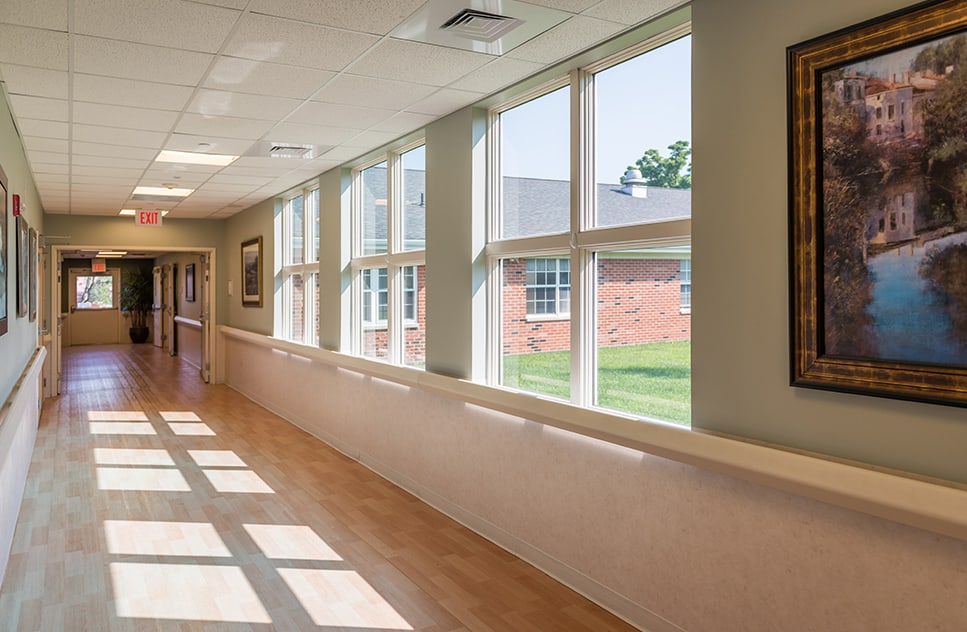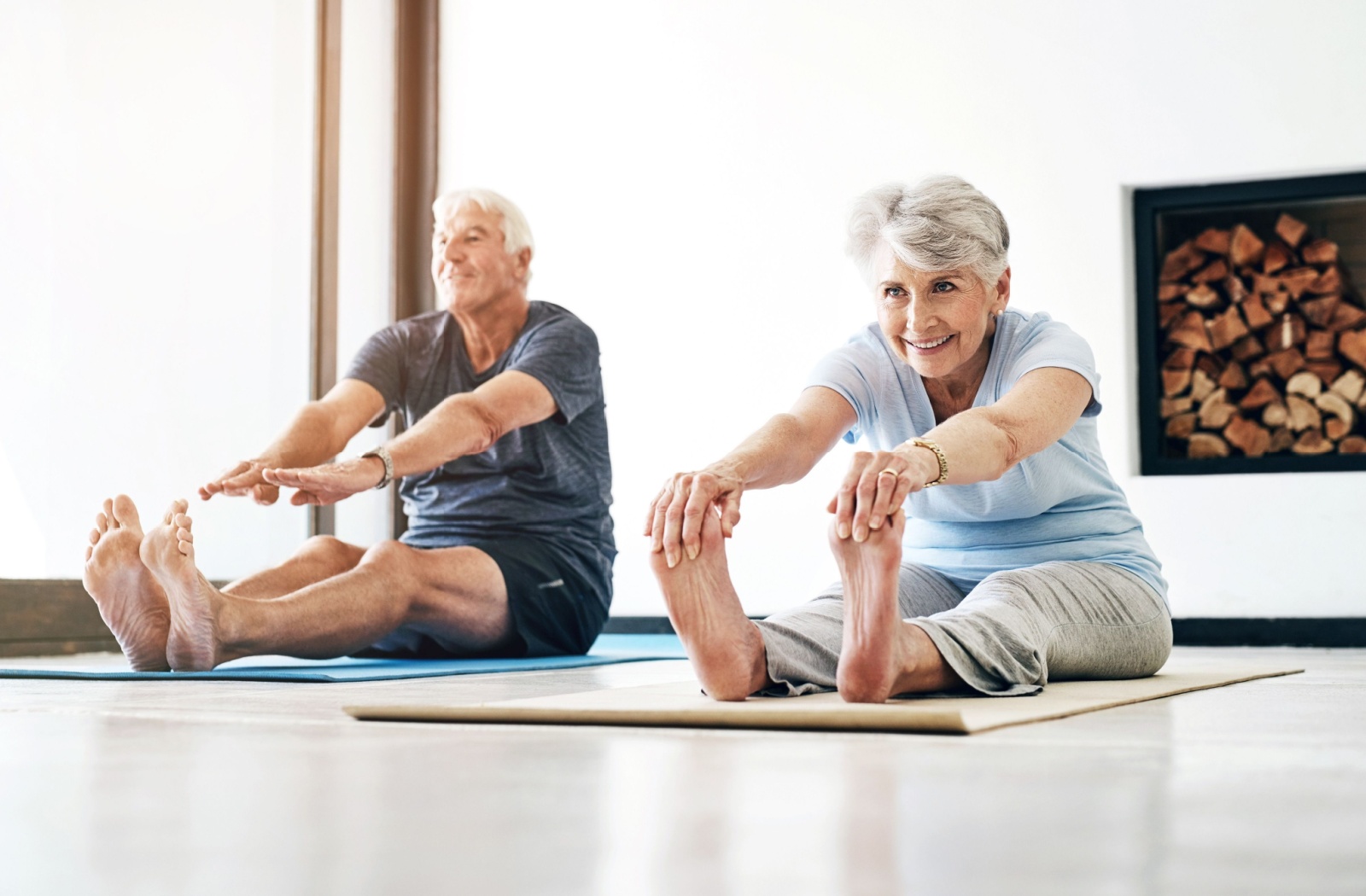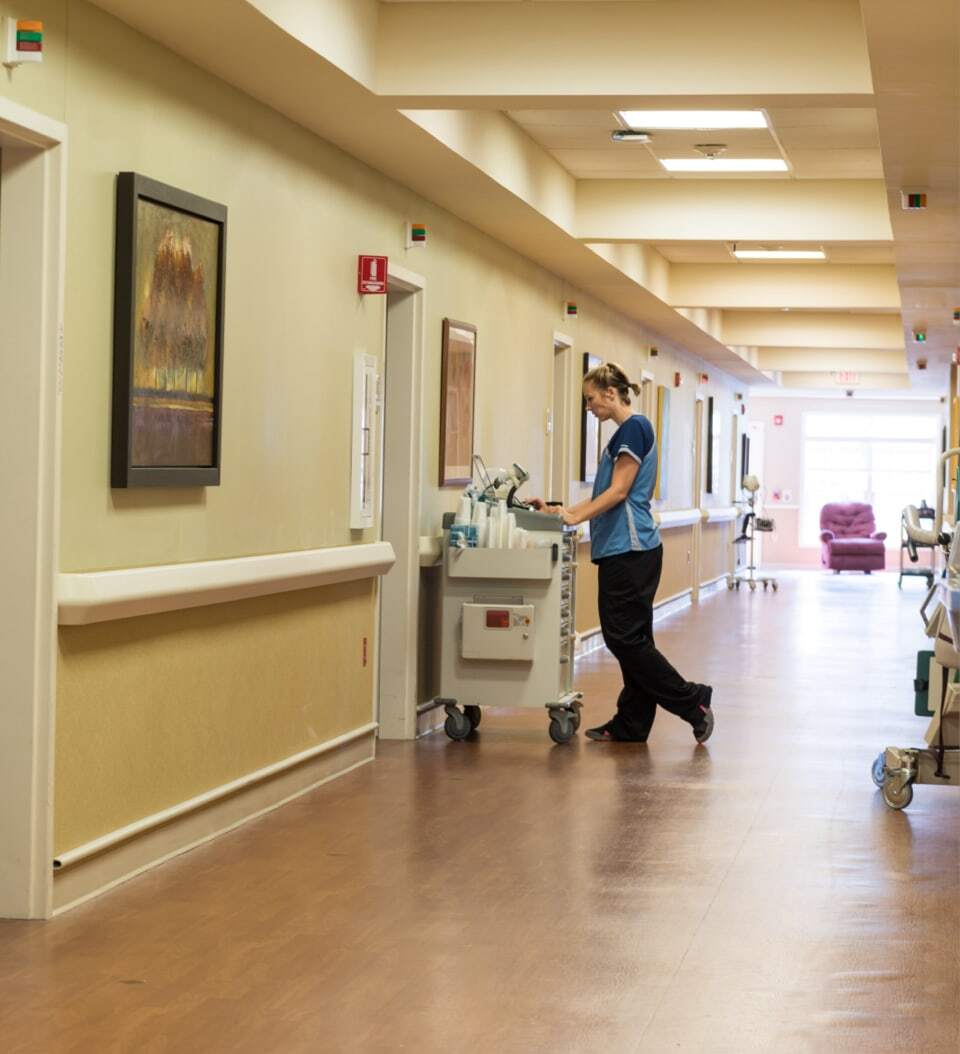Regular exercise is one of the most important parts of a healthy lifestyle. It preserves muscle mass and improves a person’s overall health.
However, for older adults, exercise always needs to be approached mindfully. It’s easy to overwork your body, and without proper care, older adults are at a higher risk of long-lasting problems and discomfort.
Older adults should avoid high-intensity or high-impact exercises. Avoiding high-risk workouts like weightlifting or long-distance running can make staying active safer and more enjoyable.
By focusing on senior-safe exercises, older adults can stay fit while minimizing the chance of injury and long-term problems.
The Benefits of Physical Activity for Seniors
Regular exercise brings a wide range of physical and mental benefits. For older adults, these can be invaluable. Exercise helps:
- Improve cardiovascular health by boosting heart function & circulation
- Enhance balance & flexibility, reducing the risk of falls
- Maintain & strengthen muscles to support daily activities
- Support mental health by reducing stress, anxiety, & depression
- Increase energy levels & overall sense of well-being
- Help cognitive function by preserving memory & mental sharpness
These all directly improve a person’s quality of life. They mean older adults can stay healthier and more active in their everyday lives.
How Much Exercise Do Seniors Really Need?
The Centers for Disease Control and Prevention (CDC) suggests that older adults aim for at least 150 minutes of moderate aerobic exercise per week or 75 minutes of vigorous exercise. You can split these active minutes across several sessions, like 30 minutes daily for 5 days a week.
Older adults should aim to train their strength and balance at least twice a week to maintain muscle mass.
Planning time for movement and building a proper exercise routine can help set older adults up for success, reduce the risk of injury, and keep fitness enjoyable.
What Exercises Seniors Should Avoid
Making inappropriate exercise choices can lead to strain, pain, or injury. Here are 6 exercises seniors should avoid to protect their health unless directly instructed by their healthcare team.
High-Impact Exercises
Workouts like jumping jacks or advanced aerobics can strain aging joints. These movements risk aggravating arthritis symptoms or causing injuries. Low-impact alternatives like walking are much safer.
Heavy Weightlifting
Lifting very heavy weights can put harmful pressure on joints, muscles, and the cardiovascular system. Even if you’ve previously lifted heavier weights, opting for lighter weights with higher repetitions can be healthier for aging bodies.
Long-Distance Running
Running miles on end may take a toll on the knees and hips, which can already feel the effects of wear and tear. Instead, try short walking routines or activities like swimming that are easier on the joints.
High-Intensity Interval Training (HIIT)
HIIT workouts are intense sessions. They alternate between bursts of high energy and rest. While these exercises are popular, they can overwork the heart and muscles and are often too demanding for older adults.
Seniors can perform some higher-intensity workouts safely, but proper caution is key.
Sit-Ups
Though sit-ups are a common core-strengthening exercise, they’re not ideal for seniors. Poor form can lead to neck and lower back strain. Slow, controlled core exercises can provide a safer alternative.
Rock Climbing
Rock climbing demands physical strength, flexibility, and coordination while carrying a significant fall risk. For most seniors, this activity isn’t worth the potential risk

Senior-Safe Exercises
Fortunately, there are plenty of safe ways for seniors to stay active. These low-impact exercises provide health benefits without increasing the risk of injury and harm.
Walking
Walking is a gentle aerobic exercise that supports a host of benefits, including cardiovascular health and joint mobility. Whether it’s a stroll through the neighborhood or in nature, walking is a versatile activity that’s easy to incorporate into daily life.
Swimming
Water-based activities like swimming or water aerobics are both fun and effective. The buoyancy of water reduces joint stress while providing resistance to strengthen muscles. It’s an excellent choice for seniors with arthritis.
Chair Yoga
Chair yoga is ideal for older adults seeking to improve balance, flexibility, and relaxation, all with one exercise. Modifying classic yoga poses helps make this low-impact workout safe and accessible for older adults.
Light Strength Training
Strength training doesn’t need to be intense to be effective. Light weights or resistance bands are a practical way to maintain and build core muscle groups, helping preserve overall mobility. Remember to prioritize proper form and care to reduce the risk of problems.
Support Seniors in Staying Safe & Active
Exercise can be a wonderful way for seniors to stay healthy and enjoy life. By avoiding high-risk workouts and focusing on safe alternatives, older adults can stay fit and preserve their well-being along the way.
At Kingston of Miamisburg, we’re passionate about empowering every person here. We work to help residents along their journey to a healthier life. In our community, we care about every person and treat them as the unique individual they are.
Schedule a tour with our community today!







